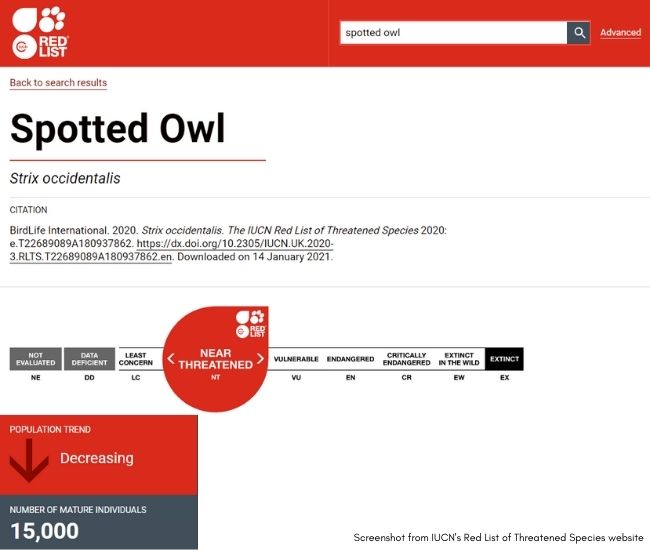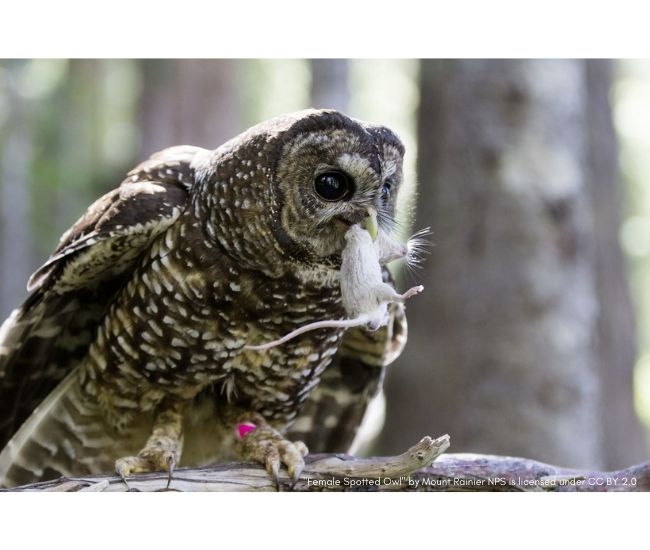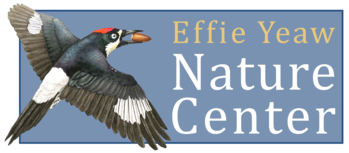There are many different species of owls that reside in the big beautiful trees of California. The towering secluded shrubbery provides the perfect home for our mostly nocturnal friends. As wonderful as the habitat may be many owl species are still at risk of becoming endangered or even extinct. Deforestation rodenticides and climate change are among the many factors leading to the decline of many owl species.
California Spotted Owl at Risk
Owls are incredibly important to our planet. They provide natural rodent control as well as population control of other prey animals that humans often consider pests. California Spotted Owls are among are many local owls that play a crucial role in their habitats. Listed as Near Threatened on the IUCN Red List they have a decreasing population trend which does not bode well for them.[1]
Spotted Owls benefit the food chain of old growth forests and depend on a healthy diverse ecosystem for survival. According to the IUCN Red List website there are only about 15000 California Spotted Owls left in the wild. They have a long list of threats including competition with the Barred Owl oil drilling logging massive wildfires and fire suppression roads and railroads utility and service lines invasive species and of course rodenticides.[1]

Conservation Actions
The U.S. Fish and Wildlife Service conducted a plan called The Northwest Forest Plan intended to provide protection and reduce rates of timber harvest leading to habitat destruction. Protected Activity Centers are also an effective mechanism for conserving the species in certain parts of its native range. In 2012 U.S. Fish and Wildlife Service designated 9.6 million acres of habitat as critical land for the Northern Spotted Owl and launched captive breeding programs in British Columbia and Seattle Washington.[2]
Effie Yeaw Nature Center
Here at the Nature Center we have a protected Nature Study Area with approximately 100 acres of trails for hiking. There are many species of animals who call our protected forest home including owls! While our most popular owl species is the Great Horned Owl it is very possible for California Spotted Owls to have made their way to our Nature Study Area to create a home in one of our old trees. Since this land and all animals that reside here are safeguarded our local oak woodland is a safe place for a Spotted Owl to nest. It is our hope that this will help their populations increase and stabilize.

How Can You Help?
– Don’t use rodenticides! Rodents eat the poison and are in turn eaten by owls who then digest and die from the poison as well. Owls provide natural rodent control and poisoning their food has been a huge cause of their decline. Instead use humane traps and relocate the rodent away from your home and/or neighborhood where it is legal to do so. Contact local wildlife care facilities for help.
– Report any barred owl sightings! Spotted Owls face huge competition from the Barred Owl. Spotted Owls are smaller less aggressive live in old growth forests and are dietary specialists.[3] Barred Owls however are bigger more aggressive can adapt easier to different forests and are dietary generalists. As such their numbers are currently on the rise and populations are intruding on Spotted Owl ranges.[4] You can report any Barred Owl sightings to California Department of Fish and Wildlife.
– Protect our forests! This includes not littering not starting fires in dry areas (or in any area where fires are not permitted) planting trees donating to forest conservation organizations and advocating for climate change solutions.
References
[1] BirdLife International. "The IUCN Red List of Threatened Species – Spotted Owl." 01 Sept. 2020. Web. 12 Jan. 2021.
[2] "Saving the Spotted Owl." U.S. Fish & Wildlife Service – Oregon Fish and Wildlife Office. Web. 12 Jan. 2021.
[3] Veronica Davison. "California Spotted Owl – Birds Endangered Species Accounts: Sacramento Fish & Wildlife Office." Sacramento Fish and Wildlife. Web. 12 Jan. 2021.
[4] "Barred Owl Threat." CDFW Prod. Web. 12 Jan. 2021.
